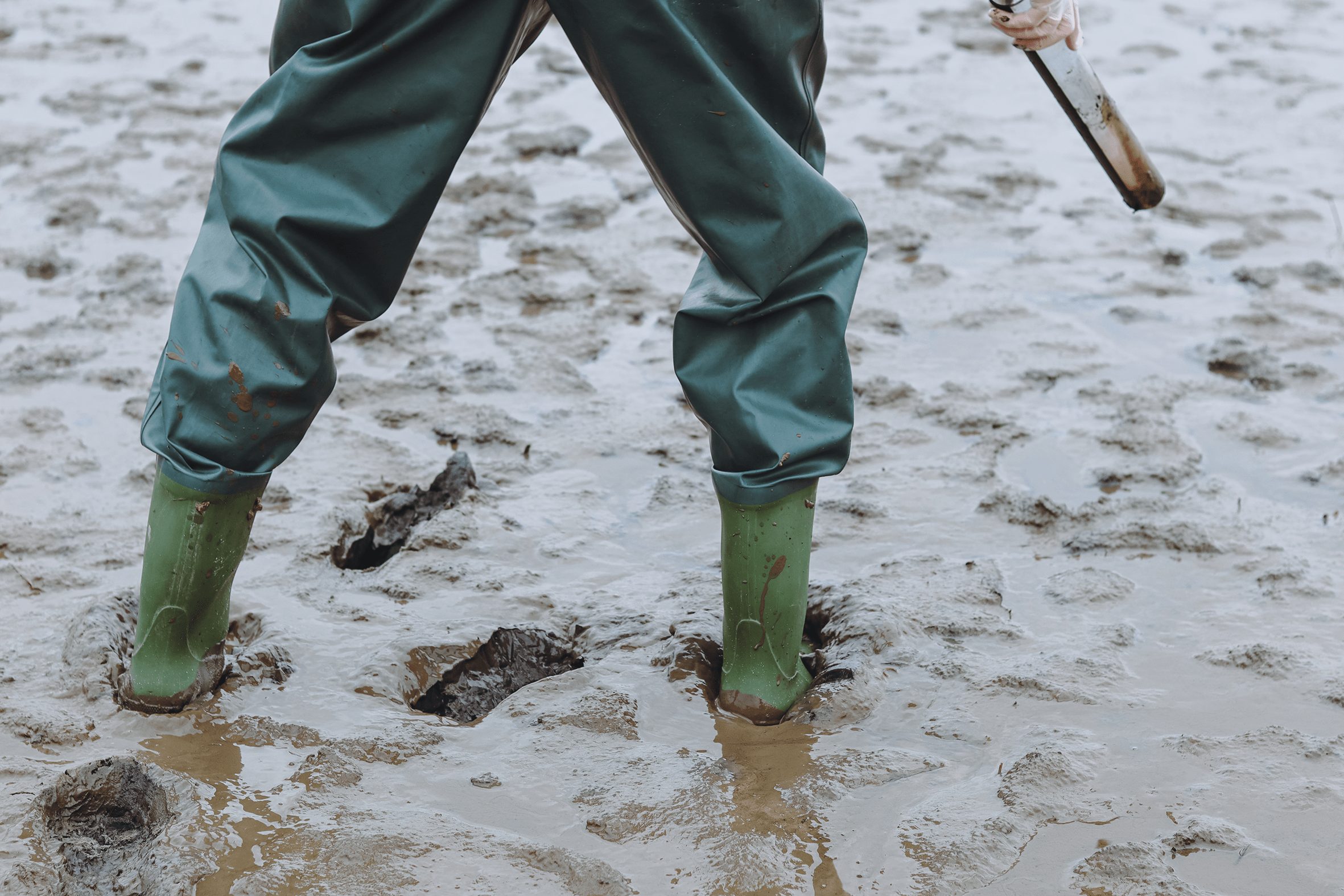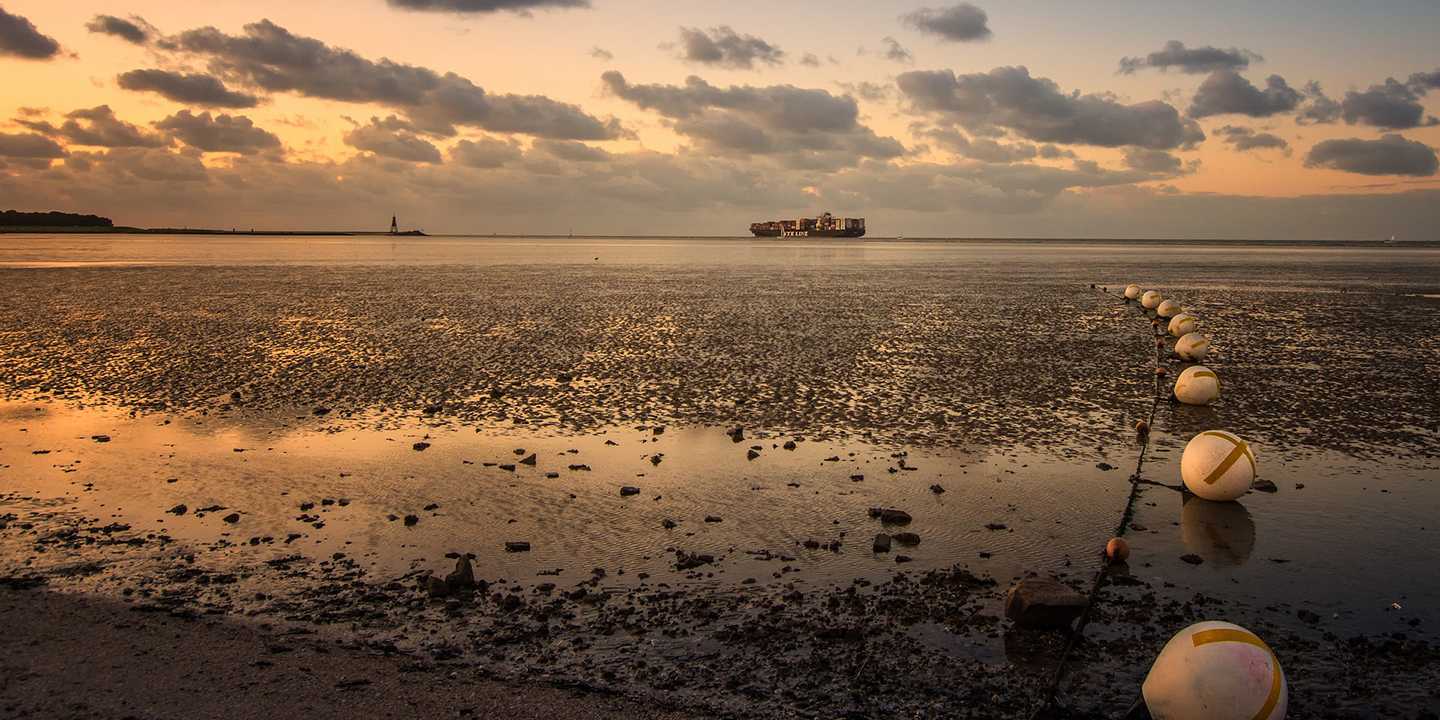“Have a shoe that fixes tightly to the foot”,
“a change of clothes”,
“it is very muddy”
“I will bring the equipment”
“I’ll bring bin bags, my car was just valeted”,
“is there a toilet nearby”,
“public transport may be tricky”
Above were just some of the conversations (and instructions given) ahead of a field site visit made as part of the postdoctoral project of Dr Amelia Hine as part of the Governance Group and Marine Political Ecology collective (supervised by Kim and Dr Katherine Sammler) focused on seabed access.
For many of us, unless it is part of our everyday work, the seabed is probably a space we think little about. But the seabed, as the recent decision by Norway to undertake mining within its national waters revealed, is a space where accessibility and usage rights are contentious and political. This becomes even more profound when we start to ask about the seabed beyond national jurisdiction where there is a lack of clear ‘ownership’. To whom does the seabed belong?

The United Nations Convention on the Law of the Sea (UNCLOS) sets out the seabed in international waters as a space known as the ‘Area’ and moreover as the ‘common heritage of (hu)mankind’. That means it’s yours and mine. That you – we – have rights to this as part of our heritage as people of this Earth. In spite of this, not many of us may even know this, or flex our muscles to stake our claim in it.

The reality is, who wants access (and gets it) may be a question of big business, money, technological ability, and geopolitical power. All is not equal when it comes to the seabed. The same holds true in national waters, where access may be granted to those with the clout and resources to research it for science, or exploit it for commercial ends.
Interrogating access is hence essential to governance questions. Any mode of access to the seabed raises questions of how that access could or should be allowed, managed, and by whom. But it also raises a linked question to whether access could or should be more equitable. Is there a way that access, rights and stewardship can be expanded to be inclusive of stakeholders beyond the usual suspects (scientists, business, etc)? The aforementioned postdoctoral project as part of the HIPP scheme addresses access to the seabed in its various guises and follows pathways of access (and blockages to access) to reflect on who the seafloor truly belongs to, how hard (or easy) it is to engage, and how you and I might gain part of our common heritage.
One pathway was to think about scientific access. With the kind assistance of Professor Thorsten Brinkhoff of the ICBM, the 4 of us set off, super-tight shoes, ruinable clothes, (a spoon!), car parking money and the tools of qualitative researchers (notepads, cameras, and other recording devices) to learn how to sample the seabed locally – to consider how accessible our German Jade Bay seabed was to the everyday person. We were about to flex our muscles.

What we learned is that everyday, in our local area, people may engage the seabed – sometimes whether they realise it or not: from the shore looking out at the birds wading on the seabed which is revealed at low tide, to actually walking upon (or sinking into) that seabed on an evening stroll. In more adventurous uses, the seabed at Dangast where we undertook our sampling, is home to floating stages for music festivals, and mud sliding competitions. There is also crucial access for scientific understanding as students engage marine biodiversity, from fish, invertebrates to microorganisms, to thinking of geochemical processes or other elements of the ocean sciences as part of their degrees, and as researchers investigate it for new discoveries. Yet the latter requires skill, knowledge and access is certainly not free for all in practice, if in principle.

The type of sampling we were doing in the Jade Bay was – in many ways – the simplest and most accessible (financially, logistically, technically) type of seabed extraction possible. Yet we were surprised to encounter so many initial hurdles. If we were to become more ambitious than this initial trip, moving off the low tide mudflats into seabeds covered by seawater, we would require – at minimum – a small boat and increasingly complex equipment.
By the time we scale up to the international seabed, much of which lies several kilometres below the ocean surface, we are looking at research vessels costing USD $ 134,000 per day1 to operate. Expeditions are meticulously planned four years in advance. With those kinds of costs for expeditions and the time and energy scientists expend planning for and collecting cores, it is no wonder seabed samples are viewed as incredibly expensive and valuable scientific objects. With increasing depth it becomes progressively more difficult for individuals without institutional backing or vast fortunes to come into contact with the seabed. As such, how should we think about the many kilometres of core samples held in repositories across the globe? Should we have access rights to them, as extracted pieces of our common heritage that we otherwise would not be able to reach?
For now, we are pondering these questions and brushing the last remnants of the mud, the sediment, the seabed, the Wadden Sea, from the treads of our shoes. Further pathways may reveal further insights into how deeply we can access spaces defined as ours to engage.
[1] https://joidesresolution.org/time-is-money/
